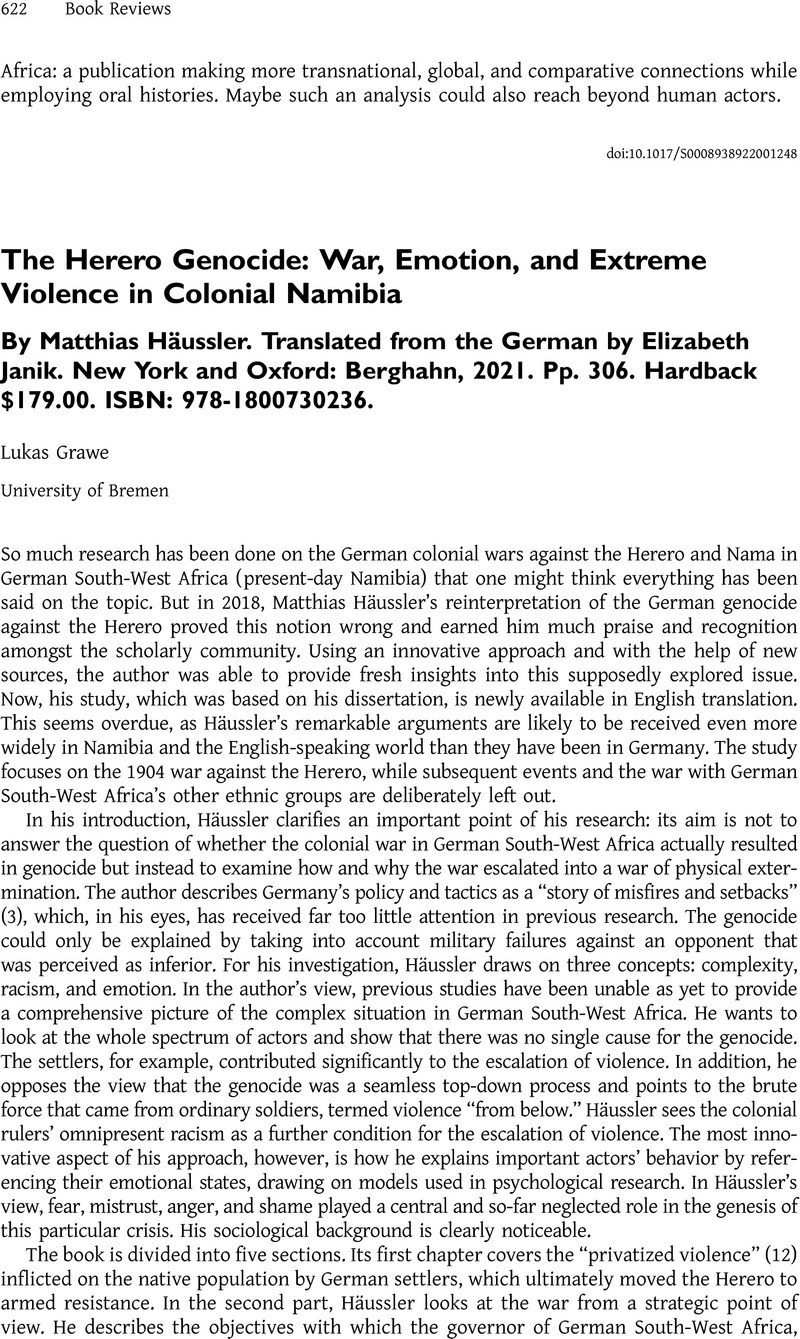No CrossRef data available.
Article contents
The Herero Genocide: War, Emotion, and Extreme Violence in Colonial Namibia By Matthias Häussler. Translated from the German by Elizabeth Janik. New York and Oxford: Berghahn, 2021. Pp. 306. Hardback $179.00. ISBN: 978-1800730236.
Review products
The Herero Genocide: War, Emotion, and Extreme Violence in Colonial Namibia By Matthias Häussler. Translated from the German by Elizabeth Janik. New York and Oxford: Berghahn, 2021. Pp. 306. Hardback $179.00. ISBN: 978-1800730236.
Published online by Cambridge University Press: 05 January 2023
Abstract
An abstract is not available for this content so a preview has been provided. Please use the Get access link above for information on how to access this content.

- Type
- Book Review
- Information
- Copyright
- Copyright © The Author(s), 2022. Published by Cambridge University Press on behalf of Central European History Society of the American Historical Association


